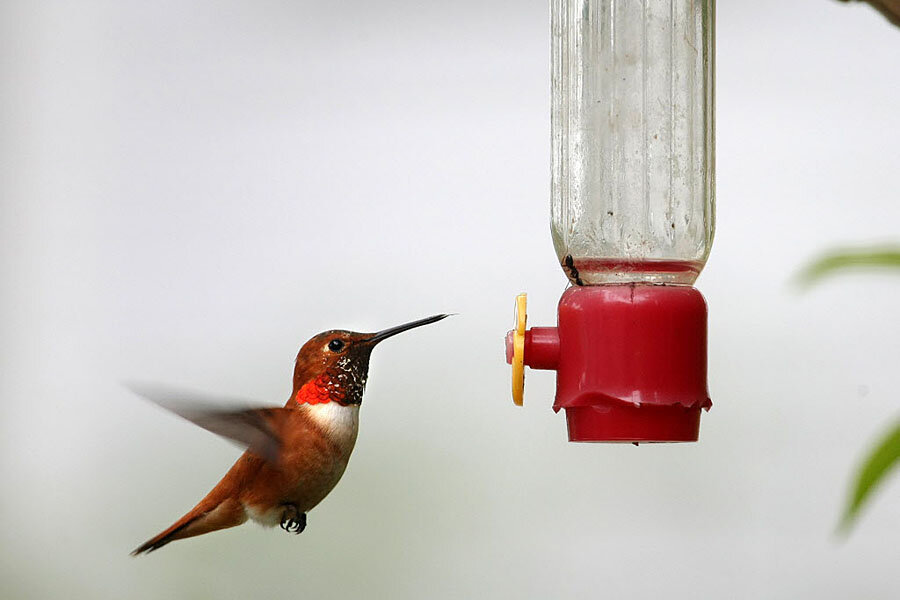How hummingbirds are inspiring military drones
Loading...
Engineers often look to nature to design more efficient devices. The prickly heads of burdock plants gave rise to velcro, sharks' skin has inspired superfast Olympic swimsuits, and gecko feet may soon help soldiers scale walls.
Hummingbirds, with their briskly flapping wings that allow them to hover, are no exception.
Scientists are turning to the tiny birds to find a way to improve the mechanics of aerial drones. But, in a recent experiment, when they compared hummingbird wings to one of the world's smallest drones, bird and robot performed equally.
It wasn't a failed attempt, though. Researchers found that one particular hummingbird could fly more than 20 percent more efficiently than the 0.56-ounce military Black Hornet "nanodrone." So they examined the mechanics of that bird's wings to learn some mechanical tips.
The team of researchers tested wings from 12 different kinds of hummingbirds. Each wing was installed in a tool that measured the lift – the force needed to keep the bird in the air – and the torque – the force required to rotate its wings.
Then the researchers calculated how much power was needed to hover, as well as the drag of the hummingbird's wings and the Black Hornet's rotor blades.
The best flier for the job was a species called Anna's Hummingbird, or Calypte anna. The wings of this tiny bird generate significantly less drag but can create stronger lift forces than its robotic counterpart.
But how, exactly, can this 0.14-ounce bird beat a half-ounce motorized machine?
The bird's wings are especially slender, study lead author David Lentink, assistant professor of mechanical engineering at Stanford told LiveScience. These slender wings allow the animals to glide farther.
"For example, if you think about a sail plane, they have super-slender wings for a reason — they can glider farther," Dr. Lentink said. "And helicopters have super slender blades for a reason — they have less drag for the same amount of lift." So the next step for engineers is to experiment with helicopter blades of different thicknesses.
The Black Hornet is already used by the British military. Soldiers use the tiny video camera to search for potential dangers ahead. Able to travel beyond 0.6 miles, the drone can scope out snipers without putting troops in danger.
The Pentagon has also launched projects to design nanodrones modeled after nature's fliers. The American project focused around the mechanics of insect flight.
"We have the technology to build a wing that is as efficient as a hummingbird wing," Lentink said. "We always thought this was out of reach. Now it turns out that if you take the design of the best micro-helicopter out there, it can perform equivalently to the average hummingbird. There's still room for improvement, but it's remarkable that we're this close."








